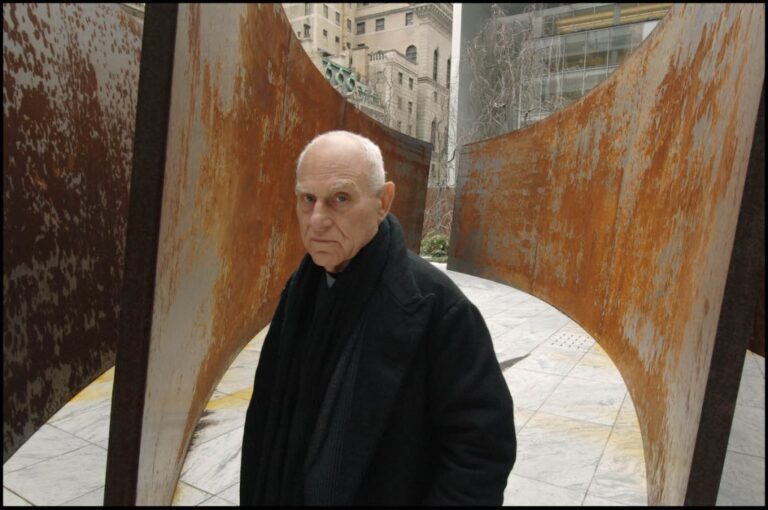Richard Serra, the sculptor whose large steel works defined the minimalist art movement, has died aged 85. New York Times reported Wednesday that Serra died at 7:00 p.m. Tuesday at his home in Orient, New York; the artist’s lawyer said Serra had been battling pneumonia.
Serra’s sculptures defined a generation of art. Working on an unusually large scale, Serra produced gigantic works of art that included steel spirals, cubes and cones. These works loom over viewers, threatening to crush them.
But despite their menacing quality, Serra’s sculptures have captivated viewers around the world. They’ve been seen all over the world, in places ranging from Dia:Beacon in upstate New York to the deserts of Qatar.
His works were not without controversy. Inclined arch (1981), a 120-foot-long Cor-Ten steel bar that once stood in a plaza in New York’s financial district, is today remembered as one of the most reviled works of public art in the city’s history. They eventually took it down because people hated it so much.
For the most part, however, critics have spoken hyperbolically of Serra’s work, considering it a game-changing work that managed to propel sculpture into new conceptual realms. He answered the ways in which a work of art not only exists in space but reorients it, shaping how viewers approach the area around it. As a result, his sculptures restrict, deform and block the spaces that viewers inhabit, forcing them to move through the galleries in a way they normally wouldn’t.
A full obituary will follow.


